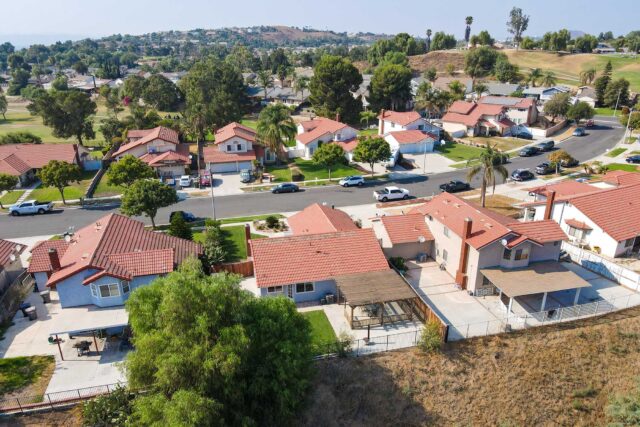California’s commercial and residential properties account for one quarter of the state’s greenhouse gas emissions—second only to transportation. So how can California reduce the carbon footprint of its buildings? We sat down with Dan Dunmoyer, member of the PPIC Water Policy Center’s advisory council and president and CEO of the California Building Industry Association, to get the score on zero-carbon homes and more.

First, what exactly is a zero-carbon home? Are there many in California?
There are not many zero-carbon homes in California, but they are being built. Zero-net-energy homes, zero-emission buildings, zero-net-carbon houses—all of these fall in the same policy realm.
A net-zero home is constructed using carbon-negative building materials. Wood, for instance, stores carbon, so if a home lasts for over 20 years, that’s considered a reduction in carbon. Generally, you’d expect to see all-electric appliances, like induction stoves; heat pumps or electric HVAC systems; solar arrays; and battery storage. We also use non-toxic and even organic building materials.
The home itself is energy efficient. These homes are very different from homes constructed 40–50 years ago: they are so airtight and well built that we have to run fans to bring in fresh air because they don’t allow air in—or heat out—in the winter.
We also use offsets to achieve a zero net energy rating. You try to do this in the same county where the home is located. You might put solar arrays in the surrounding community, including over parking lots. On older neighboring homes, you’ll put on new roofs and put solar on them, or you might put in free charging stations.
You can do all types of housing as net-zero. Single family works best because it has biggest roof space for solar. For multifamily buildings, you can install solar arrays, but it won’t produce enough power for the whole building, so you need offsite solar to make it truly net zero.
What are the challenges with this kind of home construction?
The good news is that we’ve created the perfect zero-carbon home. But at what price? Zero-carbon homes are not as crazily expensive as they were 20 years ago, but zero-carbon adds between $50,000–100,000 to a home’s cost. For ultra luxury, people don’t care, but we mostly build middle-class housing and apartments or affordable housing. You have to be mindful of pricing families out of a home, so it’s a double-edged sword. Fewer and fewer people can afford homes in California. When you achieve energy goals, you add to the cost.
What are the most important things we can do to make existing or new homes more sustainable?
We only build 100,000–150,000 new housing units each year in California—we don’t build enough houses to get us to carbon neutrality in the next 30 years. The housing stock that contributes the most carbon is the 10–14 million housing units built before 1980. Housing built after 2010 is super efficient, but before 1980, it’s the Wild West, with single-paned windows, poorly constructed doors, little or poor insulation, and windows that leak. If we retrofit 5% of the housing stock built before 1980, that would have the same carbon benefit as 10 years of zero-carbon home construction.
We have to start retrofitting older homes. Many pre-1980s homes are owned by elderly folks who’ve lived there for many years. If we incentivized low-income families living in old homes to retrofit, that would lead to an amazing reduction in carbon. It’s so easy, and it will help us achieve this goal much faster, with the secondary benefit of reducing energy costs for low-income Californians.
If we had just built efficiencies into our building codes earlier than we did in 2000, California would have already reduced its carbon footprint radically.
What kinds of policies might aid in the continued adoption of more efficient and zero-carbon homes?
California has ambitious climate goals, but we have to be mindful that if we don’t meet them in a cost-effective way, we’ll push people out of the state.
We can achieve perfection, but today only one in six Californians can afford an average-priced home—let alone a zero-carbon home. And when people leave the state, in the environmental world, that’s considered leakage: if they buy a new home in Texas or Florida, those homes are nowhere near as climate efficient as our homes here in California. That grows California’s overall carbon footprint.
We need to look at cost-effective ways to achieve our climate goals as quickly as possible without creating leakage—and we need holistic, cradle-to-grave policy decisions that can help us achieve those goals.
Topics
climate change extreme weather Housing Water, Land & AirLearn More

How to Keep Buildings Cool in California’s Warming Climate

Desire for Action on Housing Contrasts with How Californians Want to Live



